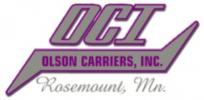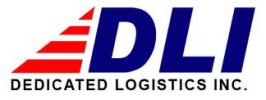Good Advice if you are thinking of becoming an Owner Operator -
Submitted by Bill on
Leasing on: Finding the right fit
Mar 4, 2016 Kevin Jones American Trucker
Many of the more successful men and women in trucking got into the business because of the freedom and independence it presented. From dock to dock, a truck driver is largely on his own, and the measure of success is straightforward: Was the load delivered safely and on time?
Granted, modern communication technologies and truck monitoring systems have taken away some of that sense of freedom, but there’s also the benefit of keeping the driver connected and less isolated from company dispatch, family and friends, or fellow truckers. All are just a smartphone button away.
Otherwise, a truck driver is by himself, with plenty of time to think. And for company drivers, the mind often drifts to fantasies of greener pastures—an imaginary place that transforms life on the road into a real, long-term career opportunity where a driver can live happily ever after.
But after jumping a time or two—or ten—from one carrier to another, experienced company drivers often come to realize the next move would be a lateral one, at best. And for those who still love the work but want a new challenge, and possibly greater rewards and satisfaction, the next step is an exciting one: to become one’s own boss.
And what better icon of independence and entrepreneurship is there than the American trucker, the rugged individualist living life on his own terms and then forging a business from his passion?
The good news is the American dream can indeed become a reality—for the right person. A successful owner-operator isn’t just “a company driver with a truck payment,” explains Dennis Brannon, who was a company driver then an owner-operator before founding Artisan Logistics Worldwide. He’s now CEO of the Columbus, SC-based transportation services agency, which has been affiliated with Landstar since 2005.
“One of the biggest mistakes many owner-operators make is that they don’t understand business and their place in the marketplace,” he says. “They have a company driver mentality, then they come into an environment where you have to find your own freight and make sure that freight is worth hauling. They should have done a little more homework before they went out and bought the truck.”
Brannon points out that, in his driving days, he leased on with a handful of companies of varying sizes. But the math is the same: An owner-operator must understand “what you make after everything’s said and done”—and that’s before deciding to take a load.
Tom Weakley, director of operations for the Owner-Operator Independent Drivers Assn. (OOIDA) Foundation, likewise emphasizes the need for a company driver “to do your homework.”
Weakley takes the lead in a number of online classes offered by OOIDA aimed at beginning owner-operators.
“It’s a giant step; I can’t emphasize that enough,” Weakley says. “If you’re a good business person, you can probably make more than you would as a company driver. But there’s lots and lots more paperwork than you’ve ever dreamed of. If you’re a person who hates paperwork, then you probably don’t want to be an owner-operator.”
Good advice
Louisville-based Mercer Transportation operates one of the country’s largest owner-operator fleets with 2,500 trucks. Jason Schaftlein, Mercer’s director of recruiting and retention, explains what the company is doing to make all those contractors feel personally welcomed—and to be more successful owner-operators.
For years, Mercer has relied on its contractor relations department to keep an eye on owner-operators new to the company, checking with them regularly to ensure a smooth transition to the Mercer way of working.
“But over time, we found a group of drivers that would help. Contractor relations people can try to give advice and talk about different ways to make more money, but the best advice comes from our successful contractors,” Schaftlein says. “They have more credibility: They’re out there on the road, and they’re making money.”
So the company has decided to formalize that peer advising and has spent the past year setting up its Mercer Mentor program. The 15 experienced and successful owner-operators are available to offer tips on every aspect of the business, whether it’s money management, equipment maintenance, or strategies for running a harmonious team truck.
“We’ve got some really good contractors in that group when it comes to crunching numbers (accounting). We’ve got some others that are really good mechanically. We just want a group that the rest of the fleet can lean on,” he says.
Since the program is run by contractors for contractors, the company doesn’t have any metrics yet to evaluate its effectiveness, Schaftlein notes. But he does “feel confident” about the positive impact early on, and he points anecdotally to the case of a struggling contractor who was having trouble keeping up the payments on his high-priced truck. Mentor John Wieczorek (American Trucker’s 2015 Trucker of the Year, with wife and co-driver Carol) helped that contractor find an older, used truck, overhaul it, and turn his operation into a profitable one.
“When it comes down to it, a lot of people may have visions of getting rich quick,” Schaftlein says. “The most successful owner-operators put a lot of years into it—they get their equipment paid off and maximize their profit.”
Nuts and bolts
New owner-operators tend to underestimate maintenance and repair expenses—to say nothing of the revenue lost to downtime.
“It’s a different type of thinking, especially for guys who are used to driving a company truck. They just expect somebody to come out and fix it,” Schaftlein says. “Cutting costs is what really separates successful owner-operators from other drivers.”
Texas-based heavy-hauler V.L. Harris emphasizes the importance of having an equipment purchasing plan and budgeting for it. And that means saving money in advance—not buying now and paying later.
Because he can do virtually all of his own mechanical repairs and even his paint and body work, Harris does get a break on maintenance expenses. But he still has to understand the marketplace, and he’s developed a broad customer base and knows which brokers he can rely on.
“I don’t waste a lot of money. When we make it, we try to save it because there are going to be some rough days. A lot of new owner-operators don’t understand the process,” Harris says.
Artisan’s Brannon agrees. From his days as an owner-operator, he recalls a friend who ended up being “a squirrel in a cage,” always in debt because he relied too heavily on the credit the company extended to its contractors for maintenance and repairs.
But company-managed maintenance accounts and emergency loan programs, if used correctly, can be the difference between an owner-operator keeping a business alive or looking for a company driving job—to pay off that debt, no less.
“There’s some comfort in knowing you’re not ruined when your truck starts to get some wear on it. And you’re thinking, ‘any day now, this thing could just quit,’ and you’re looking at a $15,000 repair,” Brannon says.
OOIDA’s Weakley agrees that having that “cushion to draw” upon is important; however, he emphasizes that leased-on owner-operators need to understand that a maintenance account, even when it’s managed by the carrier, belongs to the contractor. And, he notes, carriers have been known to make closing such an account difficult when a contractor leaves.
“It’s your money,” Weakley says, “but you need to know how much it is. It should be in the contract, and it should be yours when you leave the carrier. They have to give you an accounting.”
Long-time owner-operator, consultant and American Trucker Business Editor Tim Brady regularly addresses the maintenance issue in his columns, books and on his website.
“Your trucks, like all machines, have maintenance requirements that will not be denied. If ignored, there will be a significant price to pay for that arrogance,” Brady writes in Driven 4 Profits, an owner-operator’s guide to keeping more of the money you earn.
Finding a fit
Otherwise, how is an owner-operator to know what company is the best fit for his or her needs and abilities?
Weakley outlines some advantages and disadvantage of carriers based on their size.
· Large companies, or the “megacarriers,” as Weakley describes them, are established and more stable, have a wide selection of loads, and tend to be “more reliable” in the settlement process. Their size also means they’ve negotiated good deals on fuel, tires, and parts, and can pass that buying power on to their contractors. The disadvantages include a tighter screening of contractors as the big carriers look for more experienced, established owner-operators. Finally, fleets that also employ company drivers may offer contractors less attractive, less profitable loads—saving the most desirable freight for themselves.
· Medium-sized carriers with 150 trucks or so also should have business stability and a good load selection, and probably will offer a discounted fuel card. This comes with the advantage of more personal relationships with contractors and a little more routing flexibility.
· Small carriers clearly provide a close personal relationship, but that can sometimes be a problem as contractors may feel pressured to take unprofitable loads, run off the clock, or overlook an occasional late settlement. “The biggest thing you want to watch for is stability. The family atmosphere is important. It may not put a lot of money in your pocket, but it can give you a lot of confidence,” Weakley says.
Brannon also offers a list of items an owner-operator needs to be aware of before signing on, including what sort of load volume to expect in his area. Most companies can provide a summary of recent activity or even real-time access to the internal load board.
A prospect should also ask the company to provide contact information for current contractors working in the desired lanes. “For the most part, I didn’t feel like they steered me wrong and I was getting good information,” Brannon recalls.
And how quickly does the company pay? The Federal Motor Carrier Safety Administration lease requires 15 days, but some companies offer electronic “quick pay,” which will credit a contractor’s account as soon as the freight bills are turned in.
Mercer provides prospective contractors “hard numbers” on the latest fuel discounts, insurance costs, and freight traffic, Schaftlein adds.
More significantly, “we’re not scared to tell them it’s not a good fit,” he says. “We don’t want to make it look like something it’s not going to be.”
Greener pastures?
Brannon admits he was guilty of jumping the fence when he drove and agrees that contractors often don’t improve their situation significantly—especially as they must learn the new company’s processes and customers.
ATBS, which provides financial services to owner-operators, has some stark numbers to back that up.
“We calculate the average cost to change carriers for an owner-operator at about $12,000, so it’s important to not change on a whim and really do the research,” CEO Todd Amen says. “Often drivers may change for 2 or 3 CPM more—that means $4,000 more in revenue, maybe $1,000 net. Yet if it costs $12,000 to make the switch, that’s not a good economic decision.”
Among other benchmarks derived from ATBS owner-operator clients:
· Average miles run: 110,000;
· Average pay per mile including fuel surcharge: dry van, $1.28; reefer, $1.23; flat, $1.70; and
· Average 1099 income for 2015: $148,000.
But for truckers looking to be successful business owners, it’s the details that you have to bank on.
“Every decision you make is going to be part of your bottom line,” says OOIDA’s Weakley.







